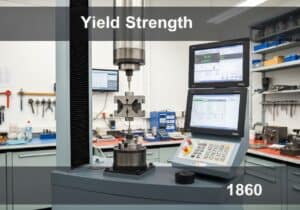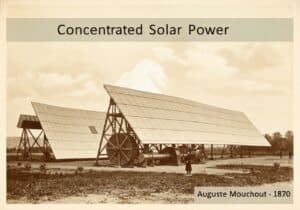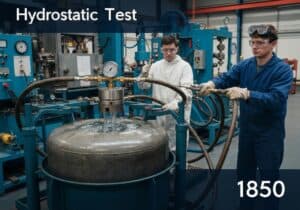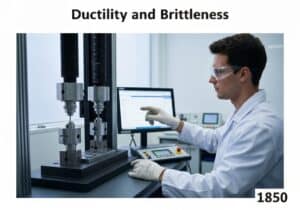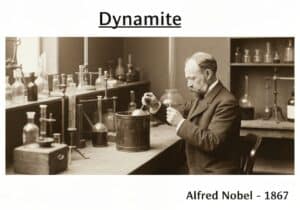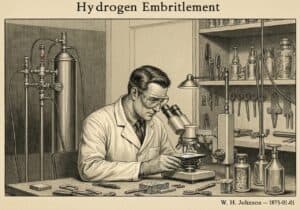
Energy harvesting technologies convert ambient energy into usable electrical power, enabling self-sustaining systems without external power sources. Piezoelectric and triboelectric nanogenerators capture mechanical vibrations and frictional forces, while thermoelectric generators exploit temperature gradients for continuous power supply. Photovoltaic and electromagnetic methods harvest solar and radio frequency energy respectively, expanding application domains. Integration with wireless sensor networks and IoT devices demands efficient power management circuits and energy storage solutions. Advances in nano materials and microelectromechanical systems enhance conversion efficiency and miniaturization. Energy harvesting from human motion and environmental sources supports wearable and remote sensing applications.
This is our latest selection of worldwide publications and patents in english on Energy Harvesting, between many scientific online journals, classified and focused on piezoelectric energy, triboelectric nanogenerator, thermoelectric generator, photovoltaic energy harvesting, electromagnetic energy harvesting, vibration energy, harvesting circuit, energy storage system, nano energy harvesting, microelectromechanical system, energy scavenging, ambient energy, harvesting transducer, harvesting sensor nodes, harvesting wireless communication, harvesting IoT devices, harvesting wearable devices, harvesting from human motion, energy harvesting from RF signals, harvesting from mechanical stress, energy harvesting from temperature gradients, energy harvest, harvesting system modeling and harvesting optimization.
VMD-LSTM-Based Model Predictive Control for Hybrid Energy Storage Systems with Auto-Tuning Weights and Constraints
Published on 2025-10-22 by Yi Yang, Bin Ma, Peng-Hui Li @MDPI
Abstract: Enhancing ultra-capacitor (UC) utilization and mitigating battery stress are pivotal for improving the energy management efficiency and service life of hybrid energy storage systems (HESSs). Conventional energy management strategies (EMSs), however, rely on fixed parameters and therefore struggle to allocate power flexibly or reduce battery degradation. This paper proposes a VMD-LSTM-based EMS that incorporates auto-tuning weight and constraint to address these limitations. First, a VMD-LSTM pre[...]
Our summary: This paper presents a VMD-LSTM-based energy management strategy for hybrid energy storage systems. It features auto-tuning weights and constraints to enhance ultra-capacitor utilization and reduce battery stress. Simulation results indicate significant improvements in UC utilization and battery life compared to traditional methods.
VMD, LSTM, Model Predictive Control, Hybrid Energy Storage Systems
Publication
Environmental Disturbance Effects on Liquid Crystal Elastomer Photothermal-Oscillator Dynamics
Published on 2025-10-22 by Yuntong Dai, Kunxia Wang, Xinyan Jiang, Peibao Xu @MDPI
Abstract: Self-oscillations convert ambient energy into continuous periodic motion through feedback mechanisms, but their response to external periodic disturbances is not yet fully understood. Through the combination of a photothermally-responsive liquid crystal elastomer fiber and a mass block within a linear light field, we consider a liquid crystal elastomer self-oscillator. Following theoretical modeling of the light-driven self-oscillator under external periodic forcing and numerical simulations, th[...]
Our summary: This study explores the dynamics of a liquid crystal elastomer self-oscillator under periodic disturbances. Three phase-locking regimes are identified through theoretical modeling and numerical simulations. The findings enhance understanding of disturbance rejection in self-oscillators and provide practical insights for their operation.
self-oscillation, liquid crystal elastomer, phase-locking, periodic forcing
Publication
Assessment of Environmental Impact
Published on 2025-10-22 by Jona Cappelle, Lieven De Strycker, Liesbet Van der Perre @MDPI
Abstract: When energy harvesting is not feasible or fails to provide sufficient power, the energy buffer of battery-powered Internet of Things (IoT) devices inevitably depletes. The proper disposal and/or replacement of depleted and end-of-life (EoL) batteries is challenging, especially in rural IoT deployments, where human intervention is cumbersome. When batteries are left in nature, they can pose a significant environmental risk, leaking harmful chemicals into the soil. This work proposes a novel conta[...]
Our summary: This work proposes a contactless battery solution for IoT devices, enhancing longevity and recyclability. It utilizes a short-range wireless power transfer system to automate battery replacement, reducing environmental risks. The solution achieves 72% efficiency and lowers the long-term environmental impact associated with battery disposal.
Wireless Power Transfer, Internet of Things, Battery Recycling, Environmental Sustainability
Publication
An Accurate Battery Capacity and State-of-Health (SoH) Estimation Tool for Energy Storage Systems
Published on 2025-10-21 by Fazal Ur Rehman, Concettina Buccella, Carlo Cecati @MDPI
Abstract: In battery energy storage systems, accurately estimating battery capacity and state of health is crucial to ensure satisfactory operation and system efficiency and reliability. However, these tasks present particular challenges under irregular charge–discharge conditions, such as those encountered in renewable energy integration and electric vehicles, where heterogeneous cycling accelerates degradation. This study introduces a hybrid deep learning framework to address these challen[...]
Our summary: This study presents a hybrid deep learning framework, CBATE-Net, for accurate battery capacity and state-of-health estimation. It utilizes convolutional layers, bidirectional recurrent units, and a temporal attention mechanism to address challenges in energy storage systems. The model demonstrates improved stability and accuracy in predicting capacity fade, making it suitable for real-world applications.
Battery capacity, State-of-health, Deep learning, Energy storage
Publication
Investigation of Roadway Anti-Icing Without Auxiliary Heat Using Hydronic Heated Pavements Coupled with Borehole Thermal Energy Storage
Published on 2025-10-21 by Sangwoo Park, Annas Fiaz Abbasi, Hizb Ullah, Wonjae Ha, Seokjae Lee @MDPI
Abstract: Roadway anti-icing requires low-carbon alternatives to chloride salts and electric heating. This study evaluated a seasonal thermal energy storage system that couples a geothermal hydronic heated pavement (HHPS-G) with borehole thermal energy storage (BTES), operated without auxiliary heat. A coupled transient HHPS-G–BTES model was developed and validated against independent experimental data. A continuous cycle was then simulated, consisting of three months of summer pavement heat[...]
Our summary: This study evaluates a hydronic heated pavement system coupled with borehole thermal energy storage for roadway anti-icing without auxiliary heat. A validated model simulates seasonal heat harvesting and discharge, revealing that borehole depth is more effective than the number of units. Results show that deeper boreholes maintain higher winter surface temperatures, enhancing anti-icing performance.
hydronic heating, borehole thermal energy storage, anti-icing, geothermal systems
Publication
Electrical Energy Storage from Low-Grade Heat Using Reduced Graphene Oxide–Carbon Nanotube Composite Materials
Published on 2025-10-21 by Zhe Yang, Yijia Xu, Shuocheng Sun, Yujia Zhang, Xiaolu Li, Yan Zhao, Xusheng Hao, Caige Xue, Dening Guo, Jia Li, Jiale Wang @MDPI
Abstract: The conversion of low-grade heat into storable electrical energy using nanoporous carbon materials represents an efficient energy harvesting strategy. In this study, a reduced graphene oxide (RGO) and carbon nanotube (CNT) composite with a rich microporous structure was synthesized. A symmetrical thermoelectric cell was constructed to harvest thermal energy. The application of a temperature difference (ΔT) generated a stable equilibrium voltage (Us), which scaled linearly with &[...]
Our summary: The study presents a reduced graphene oxide and carbon nanotube composite for converting low-grade heat into storable electrical energy. A thermoelectric cell was developed, showing improved voltage output with increased temperature difference and CNT content. The composite outperformed pure RGO in thermoelectric efficiency and power output, highlighting the benefits of CNT incorporation.
thermoelectric, energy storage, reduced graphene oxide, carbon nanotubes
Publication
Smart interactive shirt system for real-time multi-modal pain and fatigue monitoring using embedded iot sensors
Patent published on the 2025-10-02 in WO under Ref WO2025206987 by ALMANI KHULOOD [SA] (Almani Khulood [sa])
Abstract: The Smart Interactive Shirt System is an advanced wearable biosensing platform engineered for real-time, multi-modal monitoring and predictive management of pain, fatigue, and physiological stress. Embedded within a flexible textile, the system integrates 15 specialized IoT sensors—spanning biochemical, biomechanical, thermal, and neurophysiological domains—to deliver continuous high-resolution insight into the wearer's physiological state. Key innovations include plasmonic nano-op[...]
Our summary: The Smart Interactive Shirt System is a wearable biosensing platform for monitoring pain and fatigue using embedded IoT sensors. It features advanced technologies like plasmonic nano-optical modules and a hybrid AI engine for predictive management. The system also incorporates energy-harvesting capabilities and seamless connectivity for enhanced user experience.
wearable technology, IoT sensors, biosensing platform, AI engine
Patent
Neutral energy harvesting systems and methods
Patent published on the 2025-09-18 in US under Ref US2025293544 by SENTIENT ENERGY TECH LLC [US] (Patrick Robert Nicholas [us], Kar Bidesh [us])
Abstract: A neutral energy harvesting system is provided that harvests energy from an alternating current (AC) distribution neutral line by using a solid magnetic core as a transformer. The primary winding is electrically coupled to the neutral line, which may be disconnected to direct all of the neutral current through the primary winding. The secondary winding output may be converted to a direct current (DC) voltage, and the energy is stored and/or used to supply power for one or more sensors.[...]
Our summary: A neutral energy harvesting system captures energy from an AC distribution neutral line using a transformer. It directs neutral current through a primary winding to generate power. The output is converted to DC voltage for storage or to power sensors.
energy harvesting, neutral line, transformer, AC to DC conversion
Patent




